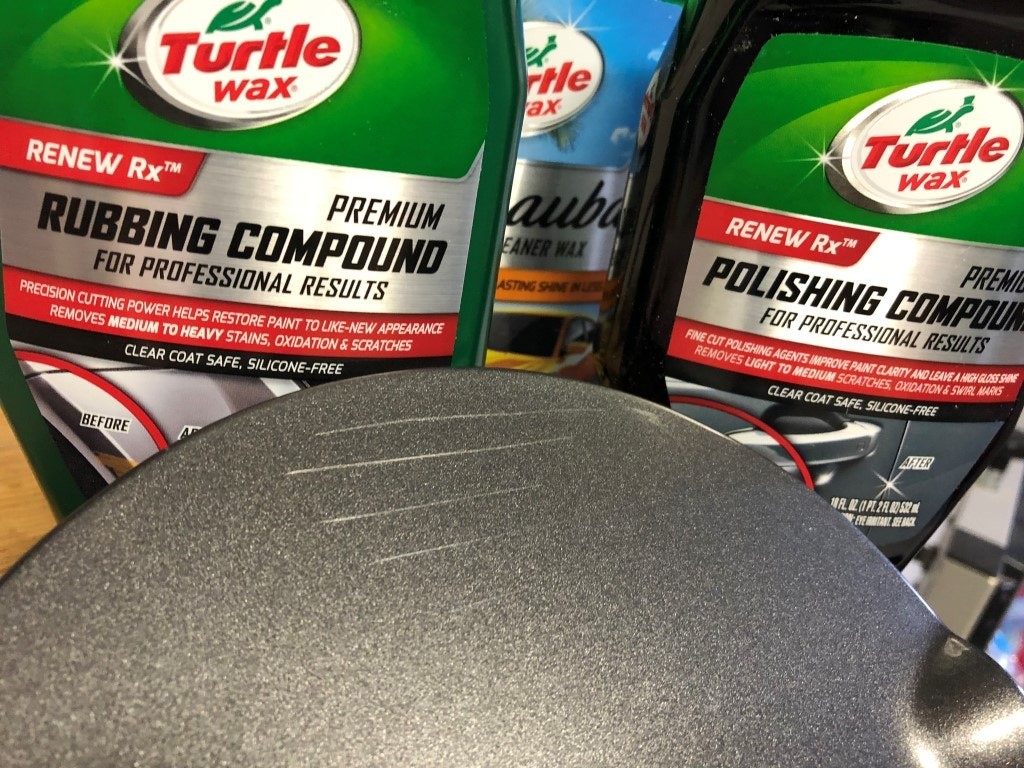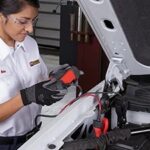Minor scratches on your car are almost inevitable. Whether it’s a stray shopping cart, a rogue tree branch, or just the wear and tear of daily driving, these blemishes can detract from your vehicle’s appearance. While deep scratches may require professional attention, there are several effective DIY methods to hide or minimize the appearance of minor to moderate car paint scratches. This guide, based on hands-on testing and expert insights, will walk you through the best approaches and products to restore your car’s finish.
Before diving into specific products, it’s crucial to understand the nature of car paint scratches. Most modern cars have a clear coat layer on top of the color coat. Minor scratches are usually confined to this clear coat, making them easier to address. Deeper scratches penetrate the color coat and may even reach the primer or bare metal, requiring more aggressive techniques. To determine the depth of a scratch, try the fingernail test: if your fingernail catches in the scratch, it’s likely deeper and might need professional help.
For the purpose of this guide, we’ll focus on DIY solutions for light to moderate scratches. We put various scratch removal products to the test on a scratched test panel to evaluate their effectiveness.
One of the most accessible approaches is using light-duty scratch removal products. We started with a range from Turtle Wax, including Rubbing Compound, Polishing Compound, Scratch & Swirl Remover, and Carnauba Liquid Wax. These products are designed for ease of use and are readily available at most auto parts stores. Applied by hand with a cloth, these Turtle Wax products, costing around $20 for the set, offered a basic level of scratch hiding.
Alt text: Application of Turtle Wax Rubbing Compound, Polishing Compound, Scratch & Swirl Remover, and Carnauba Liquid Wax products to a scratched car panel for testing scratch removal effectiveness.
While the Turtle Wax products provided some improvement, particularly on very light surface scratches when viewed from a distance, closer inspection and typical lighting conditions revealed that even minor scratches remained noticeably visible. They achieved a modest improvement, but for truly effective scratch hiding, more potent solutions are needed.
Moving up in intensity, we tested Meguiar’s Ultimate Compound, Polish, and Liquid Wax, a step up in price at around $35 for the set. Applying these products by hand to the same scratched test panel yielded slightly better results than the Turtle Wax range, but the improvement was still marginal. As our expert, Pennington, advised, “If the scratch isn’t out after a few passes, you need to turn to a machine.” This highlights the limitation of hand application for more than the most superficial scratches.
The game changed significantly when we introduced machine polishing with Meguiar’s DA Power System (approximately $54). This rotary polishing system attaches to a standard drill, providing an orbital motion that ensures more even and effective product application. The electric muscle of the DA system made a noticeable difference. Lighter scratches became virtually invisible, demonstrating the power of machine polishing in scratch removal. However, it’s important to note that moderate to deeper scratches still remained visible, even with the DA Power System.
Alt text: Car paint scratch test panel showing improved scratch visibility after machine polishing using Meguiar’s DA Power System.
The limitations of polishing alone led us to explore more aggressive techniques. Kevin Ansell, a senior engineer at 3M (which owns Meguiar’s), emphasized the necessity of sanding action for deeper scratches. He recommended the 3M Trizact Precision Scratch Kit ($20), a comprehensive system designed for light to medium scratches that incorporates sanding. This kit follows a “simple three step process”: hand sanding with specialized sandpaper, applying rubbing compound with a drill attachment, and finally applying polish, also with a drill attachment.
Sanding car paint can seem daunting, as it involves removing a layer of the clear coat. However, for effective scratch removal beyond superficial blemishes, controlled sanding is often necessary. The 3M Trizact sandpaper proved remarkably effective. After a short period of wet sanding, substantial progress was made on moderate scratches. While sanding initially dulled the paint to a hazy matte finish, the subsequent buffing with compound and polish, using the included drill attachments, restored the shine. With the 3M system, light scratches were completely eliminated, and moderate scratches became almost invisible. Even deep scratches showed a definite improvement, though they remained somewhat noticeable.
Alt text: Car paint scratch repair results after using the 3M Trizact Precision Scratch Kit, showing reduced visibility of scratches.
A minor drawback of the 3M kit is the limited reusability of the rubbing compound and polish packets, and the small size of the sandpaper squares. For extensive scratch repair work, more product and larger sandpaper pieces might be needed.
In conclusion, effectively hiding scratches on car paint depends heavily on the severity of the scratch. For the lightest surface scratches, products like Turtle Wax offer a basic, affordable solution. For slightly more noticeable scratches, Meguiar’s products offer marginal improvement, especially when combined with machine polishing using the DA Power System. However, for moderate scratches and those that are more than superficial, a sanding-based approach, such as the 3M Trizact Precision Scratch Kit, provides the most significant improvement. Remember to always start with the least aggressive method and gradually increase intensity as needed, and when in doubt, consult a professional for deep scratch repair.

